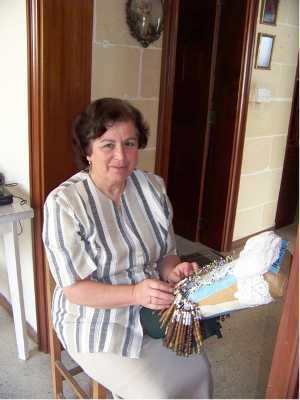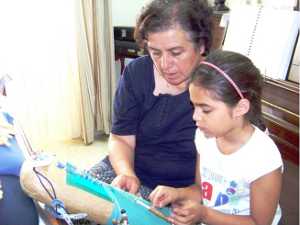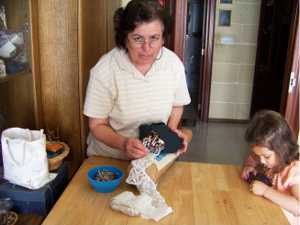|
|
|
About Us
|

|
|
|
|
|

|
|
|
|
|
|
|
|
Consiglia Azzopardi was born in Għarb, Gozo, in 1946. She hailed from a peasant family, earning livehood from farming by working agricultural lands and keeping a number of domestic animals mainly sheep. Cotton growing was the main substantial product remembered to be on the farm and similarly on the whole island of Gozo in the time of her childhood.
As expected from these living conditions, children raised in such farmer's family were from a tender age familiarized with the crafts of spinning and weaving; preparing the cotton and wool to make thread and the dying process was most fascinating in those days when there were no books around, and instructions had to be written down or better still memorized through practice.
Consiglia's family was very much self-supporting. A spinster aunt lived with the family, and besides helping on the farmlands she knew dress-making and lace-making. Like all the girls in the village, she had learnt these crafts from expert women in the area and from private teachers in the villages situated in the western areas of Gozo.
It was the custom that the money earned by lacemaking was exchanged for fabrics, sewing material, and food supplies for the whole family. She was also a good knitter and was capable of copying patterns by just watching a finished garment. Jumpers and dresses were knitted from sheep-wool abundantly found at home. This was the job for the long winter evenings when there was no electrcity and the whole family clustered around the light of one lamp for making the 'sahra'.
As a child Consiglia was very good at handwork and scored top marks in the needlework class at the local primary school. But best of all was lacemaking and her delight was to draw designs from pricking and to play with bobbins, making colour-heads out of melted sealing wax for both bobbins and pins.
Eventually Consiglia became a teacher and trained at Mater Admirabilis Training College in Malta. The first years of teaching were employed in Qormi Malta, from where she was transferred to Gozo teaching in Primary, Secondary, and Trade Schools. It was at the Girls' Trade School, where she was employed to teach lacemaking, so that she picked up on the subject and started to revive the craft which by then had greatly deteriorated even in Gozo.
Along with the teaching of lacemaking at the Gozo School of Art and Lacemaking Programme, Consiglia became the author of "Gozo Lace - An Introduction", "Gozo Lace - Selection of designs by Diacono", "L-Istorja tal-Bizzilla fil-Gżejjer Maltin". By her MPhil thesis she has researched the history of Maltese Lace during the time of the Order - 1530-1798; by her PhD thesis she researched the history of Maltese Lace during the nineteenth and twentieth centuries. The research from both Consiglia's MPhil and PhD degrees was amalgamated in a book published in 2019 named "Maltese Lace: History and Mystery, Four Centuries of Bizzilla".
|
|
|

|
|
|
|

|
|
|
|
It is true that a lot of lace material and original designs was destroyed but the craft remained rooted in the heart of many Maltese (but especially the Gozitans) who carried it away with them even to the countries where many emigrated. This was proved by their spontaneous attendance to lace classes at the School of Art newly opening in Għajnsielem in 1989. In 1996, Lacemaking Programme was created at University of Malta - Gozo Centre to teach lace on a higher accademic level, from which students attain a Certificate Course under the tuition of Consiglia Azzopardi.
The Lacemaking Programme resulted in the setting-up of "Koperattiva Għawdxija tal-Bizzilla u Artiġjanat" and the Malta Lace Guild established in 2000. |
|
|
|
|
|
|
|
|
|